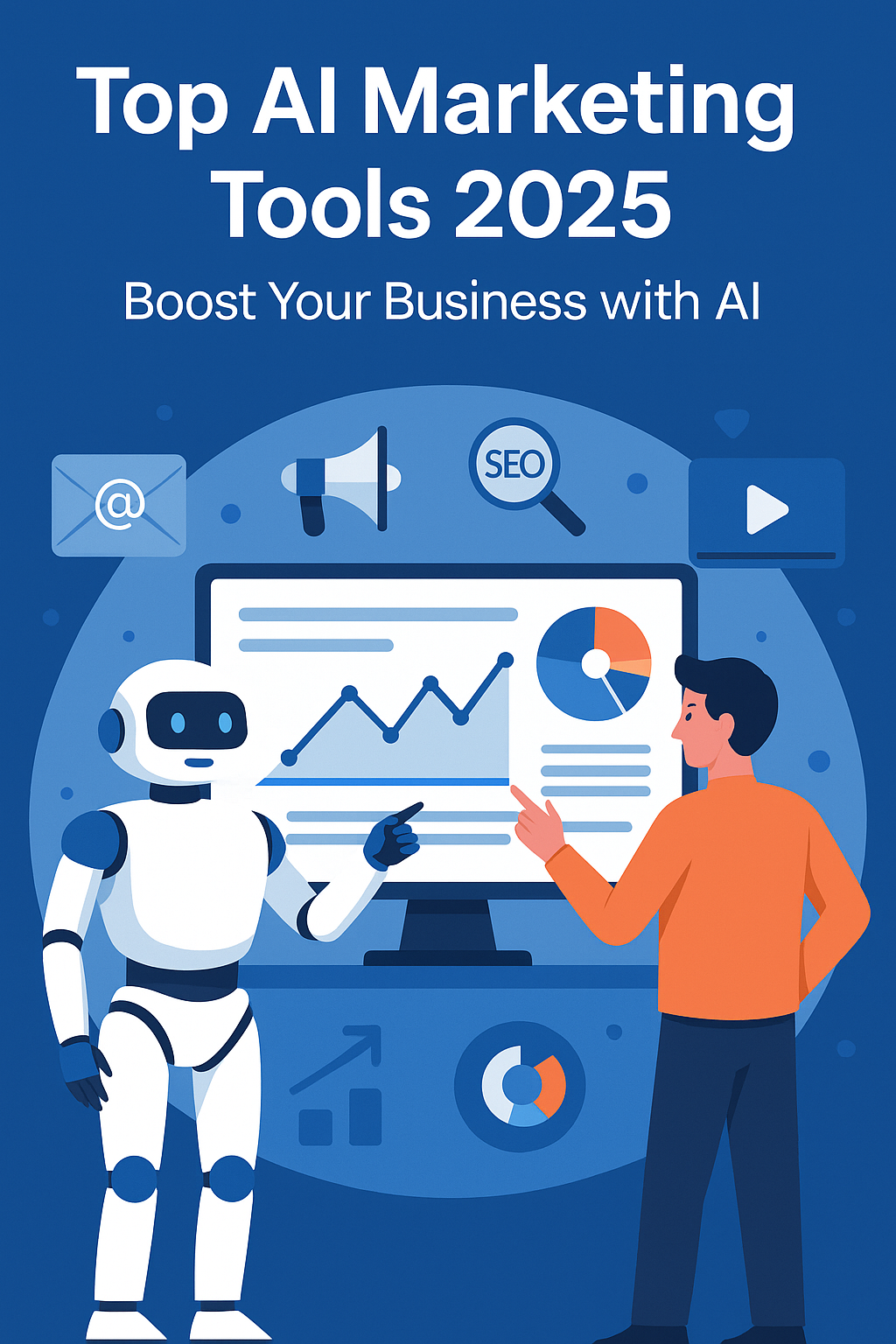If there’s one thing I’ve learned from running my blog and a small online store, it’s this: marketing takes way more time than you expect. Writing emails, planning campaigns, analyzing SEO—it can feel like a full-time job. In 2025, though, I don’t do it alone anymore. I rely on AI Marketing Tools that handle the heavy lifting, so I can focus on strategy and creativity.
In this article, I’ll share the seven AI tools that made the biggest difference for me. I’ve personally tested them, and each one helped me save hours while improving results.

1. HubSpot AI
HubSpot has always been a big name in marketing, but their AI features are a game-changer. The AI assistant can write emails, suggest subject lines, and even recommend the best time to send campaigns. Last month, I used it to optimize my weekly newsletter. The open rate went from 28% to 41% in just two weeks.
2. Jasper AI
When I need marketing copy that sounds fresh and engaging, Jasper is my go-to. I once struggled for hours to write a catchy product description. Jasper gave me three solid drafts in under a minute. Of course, I still edit them, but having that starting point saves me so much stress.
3. Surfer SEO
If you blog, you know SEO can be overwhelming. Surfer AI turns that mess into clear action steps. For one of my posts, I plugged in my draft, and the tool told me exactly which keywords to add and how many times. Within a month, the post jumped from page three to page one on Google.
4. Writesonic
Writesonic is great for creating ad copy, especially for Google Ads and Facebook campaigns. I used it to test different headlines for a paid ad. Normally, I’d spend hours brainstorming. Instead, I let Writesonic generate 10 options, and one of them ended up doubling my click-through rate.
5. Opus Clip
Video content is huge in 2025, and Opus Clip makes repurposing content simple. I uploaded a 20-minute webinar, and the AI instantly created five short, polished clips perfect for Instagram Reels and YouTube Shorts. The best part? One of those clips went semi-viral, bringing in 2,000 new followers in a week.
6. Seventh Sense
This one is lesser-known but powerful. It’s an AI email delivery optimizer that learns when your audience is most likely to open emails. I tested it for my store’s promotional campaign. Instead of blasting emails at 9 AM to everyone, it sent them at personalized times. The result? A 19% increase in conversions.
7. Copy.ai
Sometimes I just need quick social posts, and Copy.ai nails it. For example, I needed five LinkedIn updates promoting a new article. I gave the tool a one-sentence brief, and it returned posts that were not only usable but also surprisingly engaging.
The Real Benefit: Time and Energy
Using these AI Marketing Tools doesn’t mean you stop thinking. It means you stop wasting time on the repetitive stuff. I still tweak every output to fit my brand voice, but I no longer start from scratch. And honestly, that’s the biggest relief.
My Honest Advice
If you’re new to AI, start small. Pick one tool—maybe Jasper for copywriting or Surfer SEO for blog posts. Try it on a single project and see the difference. Once you’re comfortable, add another tool into your workflow.
For me, the turning point was realizing I didn’t have to do everything myself. These tools don’t replace creativity; they give you more room to be creative. And in 2025, that’s exactly what makes a business stand out.
Final Thoughts
The marketing landscape in 2025 is competitive, but also full of opportunity. With the right AI Marketing Tools, you can level the playing field—even if you’re a solo creator or a small business. These tools save time, spark new ideas, and improve performance in ways that weren’t possible just a few years ago.
If you’ve been hesitating, now is the perfect time to test them out. Because the sooner you let AI handle the boring parts, the sooner you can focus on what really matters: connecting with your audience and growing your business.